
https://ebookmass.com/product/psychology-and-law-research-
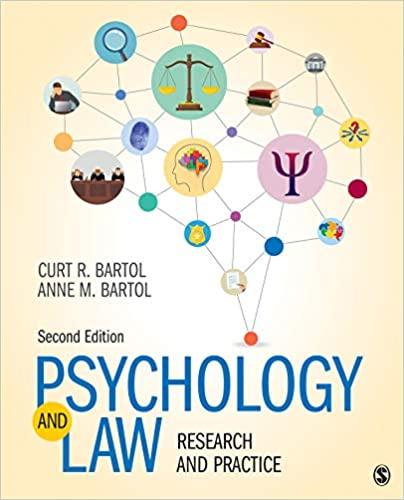
Instant digital products (PDF, ePub, MOBI) ready for you
Download now and discover formats that fit your needs...
Health Psychology: Theory, Research and Practice 5th Edition, (Ebook PDF)
https://ebookmass.com/product/health-psychology-theory-research-andpractice-5th-edition-ebook-pdf/ ebookmass.com
Introduction to Forensic Psychology: Research and Application (NULL)
https://ebookmass.com/product/introduction-to-forensic-psychologyresearch-and-application-null/
ebookmass.com
Qualitative Research & Evaluation Methods: Integrating Theory and Practice
https://ebookmass.com/product/qualitative-research-evaluation-methodsintegrating-theory-and-practice/
ebookmass.com
Ensorcelled (Prince of the Doomed City Book 3) Sylvia Mercedes
https://ebookmass.com/product/ensorcelled-prince-of-the-doomed-citybook-3-sylvia-mercedes/
ebookmass.com
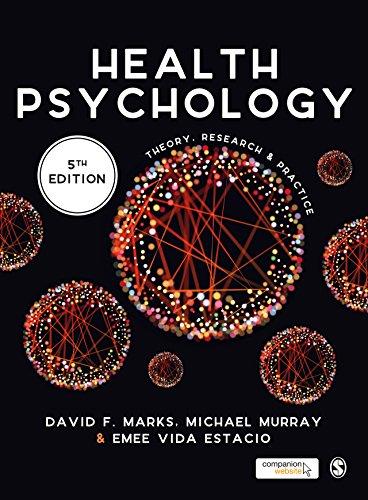
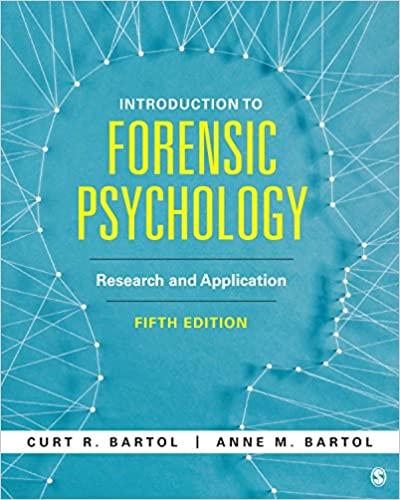


The Hampton Beach Café (Complete Series: Books 1-6) (Starting Over) Sage Parker
https://ebookmass.com/product/the-hampton-beach-cafe-complete-seriesbooks-1-6-starting-over-sage-parker/
ebookmass.com
Wicked Highland Ways Wine
https://ebookmass.com/product/wicked-highland-ways-wine/
ebookmass.com
Distrust: Big Data, Data-Torturing, and the Assault on Science Gary Smith
https://ebookmass.com/product/distrust-big-data-data-torturing-andthe-assault-on-science-gary-smith/
ebookmass.com
New Perspectives Microsoft Office 365 & Access 2019
Comprehensive 1st Edition Mark Shellman
https://ebookmass.com/product/new-perspectives-microsoftoffice-365-access-2019-comprehensive-1st-edition-mark-shellman/
ebookmass.com
Sweet Wild of Mine Laurel Kerr
https://ebookmass.com/product/sweet-wild-of-mine-laurel-kerr/


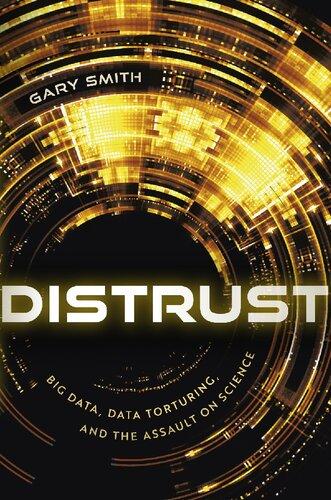
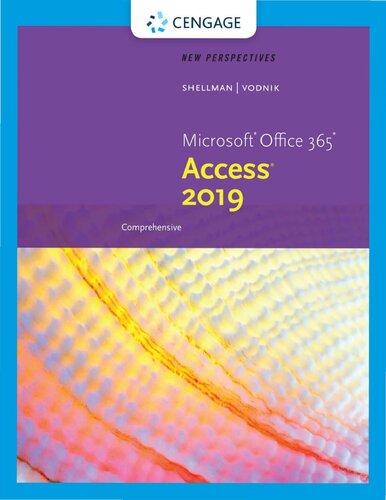

ebookmass.com
Detailed Contents
Preface
About the Authors
• CHAPTER 1 Introduction
Goals and Definitions
➡ Box 1.1. Work Settings of Psychologists Who Participate in Psychology and Law Activities
Definitions of Psychology and Law
Psychology and Law: Three Approaches
Psychology in the Law
Psychology and the Law
Psychology of the Law
➡ Box 1.2. Education and Training in Psychology and Law
Ways of Knowing and the Methods of Science
Ethical Guidelines
➡ In Focus 1.1. Telepsychology, Ethics, and the Law
Psychology and Law: A Challenging Alliance
Defining and Classifying Law
Content Classifications
Civil and Criminal Law
Substantive and Procedure Law
Classifying by Origin
Constitutional Law
Statutory Law
Administrative Law
Psychology and Law: Some Differences
Summary and Conclusions
Key Concepts
• CHAPTER 2 Psychology and the Courts: An Overview
Organization of the Courts
Federal Courts
State Courts
Specialized Courts: Drug and Mental Health Courts
➡ In Focus 2.1. Veterans’ Courts
Drug Courts
Mental Health Courts
➡ Researchers at Work 2.1. Graduation From Mental Health Court
The Judicial Process
Pretrial Stage
The Role of Psychologists at the Pretrial Stage
Trial Stage
The Role of Psychologists at the Trial Stage
Disposition Stage
The Role of Psychologists at the Disposition Stage
Appellate Stage
The Role of Psychologists at the Appellate Stage
➡ Case Study 2.1. Masterpiece Cakeshop v. Colorado Civil Rights Commission: Discrimination or Freedom of Religion and Expression?
The Psychologist as an Expert Witness
The Frye Standard
The Daubert Standard
Supreme Court Decisions After Daubert
Expert Certification
Adversarial Allegiance
The Confidentiality Issue
Ultimate Issue or Ultimate Opinion Testimony
Surviving the Witness Stand
Summary and Conclusions
Key Concepts
• CHAPTER 3 The Criminal Investigative Process
Overview of Profiling
Crime Scene Profiling
Three Basic Approaches to Crime Scene Profiling
Geographical Profiling
Psychological Profiling
Suspect-Based Profiling
Psychological Autopsy
The CSI Effect: Fact or Fiction?
Profiling as Expert Evidence
Paths to Admission of Evidence
Jury Selection
Venire and Voir Dire
Allowable Challenges During Voir Dire
➡ Researchers at Work 5.1. Implicit Bias in Jurors Do Lawyers Use It to Their Advantage?
Death Qualification A Special Issue
➡ In Focus 5.1. Mixed Evidence What to Do?
Scientific Jury Selection (SJS)
Jury Size and Decision Rule
Jury Size
Research on Jury Size
➡ Case Study 5.1. A Lone Holdout and a Mistrial
Conclusions on Jury Size
Decision Rule
Research on Decision Rule
The Jury’s Role During Trial
Instructing the Jury
The Dynamite Charge
Research on Charging Instructions
Research on Admonitions
Capital Sentencing Instructions: A Special Issue
Jury Nullification
Summary and Conclusions
Key Concepts
• CHAPTER 6 Jury and Judicial Decision Making
The Jury Decision-Making Process
Jury Deliberation Styles
Jury Participation During Deliberation
The Story Model
Hindsight Bias
Influences on Jury Decision Making
Legal Trial Factors
Strength of the Evidence
Scientific Reliability of the Evidence
➡ Researchers at Work 6.1. What Leads to Conviction or Acquittal? A Field Study
Nature of the Evidence
When Is Punishment Enough Punishment?
Juvenile Competency
Juvenile Psychological Disorders
Miranda Protections
➡ Case Study 8.1. From Michael C. to J. D. B. Questions of Interrogation and Custody
➡ In Focus 8.2. Federal Juvenile Delinquency Act (18 USC § 5033)
Juvenile Interrogation and False Confessions
Emotional and Psychosocial Immaturity
Interrogation Tactics
Compliance With Authority Figures
Reciprocity
Edmonds v. State of Mississippi (2007)
Plea Bargaining
➡ Researchers at Work 8.1. Helping Juveniles Plea Bargain
Children as Witnesses
Legal Criteria for Child Testimony
➡ Case Study 8.2. Ohio v. Clark (2015) Revealing Abuse to a Teacher
Psychological Research on Child Testimony
Honesty
Accuracy as a Function of Age
Lineups
Suggestibility
Reality Monitoring
Courtroom Cross-Examination of Children
Communication Modality
Summary and Conclusions
Key Concepts
• CHAPTER 9 Psychology and Family Law
The Modern Family Court
Changes in Family Court in Recent Years
The Nature of Caseloads and Responsibilities
The Expanding Roles of Mental Health Professionals
Divorce and Child Custody
➡ Case Study 9.1. Visitation Rights for Grandparents and
Others
Parental Alienation Syndrome (PAS) or Disorder (PAD)
Attempts at Improving the BIC Standard: The Approximation Rule
Custodial Arrangements
➡ In Focus 9.1. Our Son Shouldn’t Play Football! A New Issue for Family Courts
The Psychological Effects of Divorce and Custodial Arrangements
The Effects of Divorce
The Developmental Age Factor
The Effects of Custodial Arrangements
The Roles of Mental Health Professionals in Child Custody Cases
Court-Appointed Neutral Evaluators
Conducting Child Custody/Parenting Evaluations
➡ Researchers at Work 9.1. Child Custody Evaluations:
Negotiating the Minefield Criticisms of Child Custody Evaluations
Work-Product Evaluators
Case-Blind Consultants
Trial Consultants (Non-testifying and Testifying)
Alternative Dispute Resolution (ADR)
Divorce Mediation
Collaborative Divorce
Parenting Coordination
Contemporary Special Issues in Custody Decision Making
Parental Relocation
Incarcerated Parents
Never-Married Parents
Same-Sex Parents
Child Welfare Evaluations
Summary and Conclusions
Key Concepts
• CHAPTER 10 Involuntary Civil Commitment
A Brief History
Due Process Changes
Outcomes of Statutory Changes
Loosening the Standards
Glossary Cases Cited
References
Author Index Subject Index
interact with the law in many contexts. They serve as consultants, clinicians, and experts testifying in court. Professional organizations, most notably the American Psychological Association (APA), submit briefs to appeals courts that summarize the research in given areas, such as research on adolescent decision making or the effects of discrimination.
Many mental health professionals associated with psychology and law conduct psychological assessments that are requested by lawyers and courts or mandated by statutes. For example, psychologists assess risks and threats, parenting plans, children for educational purposes, criminal defendants, emotional suffering in civil suits, and the capacity of individuals to write their wills and make health care decisions. Assessment is woven explicitly or implicitly into virtually every chapter of this book, and a special concluding chapter focuses directly on this topic.
Numerous court cases, particularly those that reached the U.S. Supreme Court and other appellate courts, are cited throughout the book. Many are summarized in accompanying tables. We caution that these cases are representative, not exhaustive. In the hands of law professors and law students, the cases in this book would be subjected to extensive legal analysis. We use them not for that purpose, but rather as a springboard to cover psychological concepts and issues.
The subject matter of the cases chosen relates to psychology, and the decisions themselves have often led to more psychological research. For example, prior to the landmark Miranda v. Arizona (1966) case, suspects in police custody were routinely submitted to psychologically coercive interrogation techniques without being advised of their legal rights. The decision by the U.S. Supreme Court that required police to warn suspects placed some limits on this practice, but, as many readers undoubtedly know, this was not the last word on the subject. The Miranda case, however, eventually led many psychologists to ask, “Do people really understand these Miranda warnings?” as well as to design and validate instruments to measure this comprehension. In a similar manner, Supreme Court cases related to eyewitness identification prompted researchers to examine in depth what factors led to accuracy and inaccuracy in that regard.
